Home Essentials: LOOT
by Estim20, HSM Editor
With the recently introduced Wave 2 for the Harry Potter line, it reminded me how it likely enticed new users to give PlayStation Home a first, second and quite possibly even third chance. It all depends on where they are usage-wise of course, but the point remains. LOOT isn’t new to licensed releases on Home and with the recent forays into two of Britain’s largest properties, it stands to reason they would attract people who either never heard of Home before or weren’t giving it a second glance.
This thought helped turn my memory dial back a few years – specifically to 2009, when I tried Home for the first time. I remembered reading about Home before (wherefrom exactly is lost to my brain’s love for ADHD and distractions), but since I owned only an Xbox 360 from that generation up until 2009, I couldn’t actually benefit from any Home news. Well, at least not benefit directly from in the same way I would later on, but all the same.
I remember my introduction to Home fairly well. It was holiday season 2009, yet another snowless December for my state – or at least my region of the state. I swear it must be allergic to snow; if nothing else, drivers certainly were, judging by our collective inability to handle even the slightest bit of ice. With pretty much every person braving the roads to capitalize on sales or indoors by choice to deal with families, chances were good I wasn’t going anywhere for a while. What better opportunity to pass the time with this new-fangled machine from Sony’s corporate machinations?
Naturally Home was celebrating the holidays at the time, since it hadn’t technically ended – at least not until everyone woke up two weeks later from consuming the traditional amount of New Year’s alcohol. My first foray into Home led me, if just the slightest bit unsurprisingly, to Central Plaza. I don’t really recall it having any horrible first impressions, just a general feeling that it really hadn’t changed much from that first impression up until they decided bury it in favor of the Hub.
I do remember that being around a space with such immense crowds eventually led me wondering where else to go. I’m not exactly someone you’d accuse of being extroverted (ask most of my friends, they shall surely confirm) so wading through a veritable lake of avatars for the sake of communication seemed ill-advised. This of course meant I needed some direction – the most obvious one was a less-crowded affair, one where I can at least feel like my chances at meeting a NOT-troll were even only slightly in my favor.
Expecting to never run into a troll was obviously wishful thinking, but such lofty expectations aside, it was going to be challenge to brave Home, if for one major reason. Every new user to any social program is going to run into a medley of questions, of which a significant number will echo the same point.
“What do I do?”
It’s why guides, forums, and the News of the Day feature exist, to give users new and old a sense of direction. It’s why the Hub was built around the concept of, well, a hub. It’s why the tutorial gave you the basics of navigation – and perhaps why it spit you out in the Hub once you left the womb that is Harbor Studio. People want to know what to expect, where to expect it, and if it’s possible to tailor the experience to their preferences.
Now, for me, even back in 2009, that question wasn’t always easy to answer concisely (although people nevertheless tried). Home lacked a bit of focus before and thus plenty of people basically saw it as a social network for gamers, Second Life limited to the PlayStation and lacking (for now) user-generated content. It possessed a few interactive elements and notable games, some of which are still around – anyone still playing Sodium will quickly remind you of this fact should it be in doubt. Many of its basic elements from even closed beta, let alone open beta, remain to this day, ranging from the most overt (avatar clothing, personal spaces), to the subtler (R1 menu, that sense of ennui you occasionally catch from the Hub, a carryover from days of Central past).
However, Home in 2009 wasn’t exactly held up to the same expectations as we see in Home today. So much functionality and innovation arrived post-2010 that Home is almost unrecognizable. What we expect from any developer now is much higher than it used to be, adding a greater deal of risk for anyone hoping to sell anything to the Home populace. Convincing an increasingly fickle (and sometimes colicky) user base to spend their cash on a new personal space, among other things, these days is a tougher obstacle to overcome once you realize how much has been added within the five years of open beta. The last two years alone are enough to show what’s at stake when a random user wants to find something that matches his interests.
And that’s even assuming you’ve been here as long as I have, let along longer. We, the veterans, have it easier in a sense since we witnessed the updates before we knew any of the more recent functions and updates were possible. We eased into it since we logged in before the likes of companions, new locomotion, and even entire companies existed. We have the opportunity to take Home update by update since we had more time to assimilate new features as they happen.
Imagine, however, being a new user in 2013, without the advantage of seeing everything get added gradually. New users don’t have the experiences we do; Home, as far as they know, has always been this way. The Hub has always existed, we always had companions. Of course they learn that isn’t true but even when they do learn how exactly Home has evolved, new users don’t have the benefit of seeing it in action. If they log in for the first time this year, this is how Home looks to them, without having to wait for these features like we did.
So it’s difficult at times to remind ourselves that more is at stake for new users. They must take in far more than we did when we decided to give Home a chance and that problem will only get worse as the years pass. As such, users will benefit greatly from a list of items and spaces to check out should this be their first time.
That train of thought led me here. A tutorial is all well and good – and Home does provide one for new users – but something else caught my interest. New users will inevitably grasp the basics of how to navigate around Home and, hopefully, chat with others without sounding offensive. Once that is complete, they can focus their energies instead on another matter – namely, where to start should they decide to spend a few dollars on this service.
As such, showing everything they can buy is perhaps one of the worst ideas to start with. I imagine unloading every possible item in the stores as akin to staring at the monolith in 2001 – except we aren’t Dave and thus can’t expect to come out the other side enlightened or sane from the experience. It’ll give them information about what’s in the stores, but it won’t give them what they want to hear most: why any of this matters and why they should be interested.
Instead we should use that opportunity to limit them to the Essentials of Home, those items and services that are the most important to know about from the get-go. Everyone has their own preferences, but there are those elements that are constantly brought up and recommended because they are that good, add that much to Home or give you that much of an idea of what makes Home special. These are the items that are Home Superstars, those which if you must limit yourself to a select few items, these are the best places to check.
To kick things off: I figured it would make sense to write articles around specific companies and showcase what they offer that I felt any new user should check out. If you can see these in action before making a purchasing decision, do so, but these items seem time-tested crowd pleasers. You won’t go wrong pursuing these avenues and it’ll enrich your experience on Home like you wouldn’t believe.
With that in mind, the first company showcase will be perhaps unsurprisingly: LOOT.
LOOT is one of the golden-oldies, easily a staple of Home and one that saw the transition into open beta. It’s most famous for being a company focused on functionality and movie/television licenses, with recent Doctor Who items as proof positive. Much like Lockwood or nDreams, which shall be covered in the future, chances are any given veteran will own something LOOT created, even if it isn’t necessarily clothing items. Personally I couple LOOT with said Lockwood and nDreams as Home’s Power Trio, one that has especially proven long-lived. You’ll see why once you start reading what LOOT has to offer.
To give an idea as to what you can expect from LOOT’s library, here are a few of their essentials.
Movie/TV Licenses
One of LOOT’s earliest items offered for sale is the Ghostbusters firehouse. Those of you familiar with the movie will recognize this as a faithful recreation of the interior for the Ghostbusters’ headquarters, a building Egon so positively suggested be condemned before they decided to buy. This personal space started a beautiful friendship between LOOT and officially licensed fare for Homelings everywhere.
Since then, LOOT branched out to port Men in Black and, most recently, Doctor Who for Home use. If there’s ever any doubt about Home’s ability to bring in something major, awesome and majorly awesome, bear in mind that back in 2009, most people would’ve performed the greatest simultaneous spit take if you said Doctor Who was on the horizon. Back then, you could find official costumes for games offered on the PlayStation 3, but the thought of including such a significant cultural icon as the Doctor (or Harry Potter, for that matter, but that’s another story) as a purchasable option would’ve really turned a few heads four years ago. It turned a few heads now and we’ve come to accept more from Home than ever before.
LOOT’s ability to provide such licenses means we can now expect just about anything – and ask for just about anything on the off-chance it comes true. It’s a state we couldn’t easily say we lived in at Home’s start. Think about what we’ve seen in 2013 so far, if you need more proof. Since January, Home has seen the releases of not just Doctor Who merchandise but Harry Potter’s wizardly world (in its second wave no less) and, perhaps most inexplicably (if pleasantly), Galaxy Express 999, with a second wave of Doctor Who promised in the future. Galaxy Express alone should provide strong doses of optimism, but these three licenses combined supports the notion that we can expect far more than we ever could at any point in Home’s history.
For much-welcome perspective: I remember people making celebratory hoopla over the release of Final Fantasy XIII costumes. Square-Enix hasn’t made as much of a presence as the Power Trio mentioned above but much like Capcom, it decided to inject Home with much-desired gaming licenses. It made perfect sense: with Home being prominently displayed on a gaming console, it stood to reason gamers would be using it. And if gamers are using it, what would they want most?
The introduction of the then-latest installment of a popular franchise was a good fit. To this day people (myself included – or maybe just me, shut up) hope they release Fang and Hope to round out the collection. Now imagine that a billion fold and you may get an idea what Doctor Who would bring to the table.
Machinima Tools
If you are a regular machinima artist, you likely saw this coming.
One of Home’s most important tools is the ability to record video of Home while in Home, without the need to set up a physical camera and record the television screen. This tool is incredibly valuable to the machinima crowd and is one of the largest sources of content for the Theater and the EOD TV. At the epicenter of these tools sits LOOT, providing the most lauded innovations for the machinima artist in all of it.
It’s perhaps one of the least boggling facts to hear that LOOT is responsible for providing tools for creating fan video for Home. They created a name for themselves with movie licenses; one of their first personal spaces (Ghostbusters) came with a built-in camera; and buying said personal space even netted you a few extra tools and props. The props both included and in the store ranged from blue screen to Ghostbusters-worthy props that allowed you to live out the fantasy with that extra attention to detail.
LOOT took the tools further with their Sound Stage, which came in two flavors. The first included a pre-made set that simulated a house, which helps when you rather not try and build it yourself. The second gutted the set in favor of an empty set, ready for a set designer to customize to their heart’s content. I purchased the second option and while the machinima bug hasn’t bitten me (yet, and who knows if it will), such a personal space is amazing for such matters.
LOOT’s primary goal with such tools is to provide as much to the directors as possible within the framework of Home, so that they aren’t required to settle for recording the screen and hoping it looks halfway decent. To that effect, they provide the most common tools in some form or another. Green and blue screen, cameras, an entire set in the case of the two sound stages, movie lighting placed anywhere – chances are if you can name a tool for filming, LOOT has you covered.
EOD TV and Radios
Ever noticed some of the innovations added within the past couple of years are things that, had this been meatspace, we’d wonder what the deal is? The ability to change how your avatar moves, the ability to listen to licensed music anywhere, being able to ride a variety of vehicles – we are finally getting around to including some of this. This isn’t a condemnation, mind you; it’s a reminder that Home is evolving and some features take a little finagling from the infrastructure and copyright concerns.
Case in point: one of the most coveted features in Home is the ability to play licensed music and movies, not just those designed for Home. Back in 2009 (probably should’ve warned about seeing that phrase a lot), being able to hold movie nights and play music in clubs was considered a pipe dream. After all, each movie and song came coupled with a copyright, indicating someone owned it and the right to decide who could play it. With Sony making off of Home, asking for a radio and a television that actually functioned and played anything licensed must’ve felt like asking for the Moon.
Well, here we are, 5 years into public beta and wouldn’t you know it? We can actually do this. Thanks to Crackle (owned by Sony, dontcha know) and LOOT, we are now capable of watching licensed films and listen to music (courtesy of radioIO). Due to Crackle being owned by Sony, it does mean they are limited primarily to Sony Entertainment films and shows, but that’s expected.
What’s additionally beneficial about this is there are two ways to enjoy the fruits of LOOT’s EOD TV and radioIO. The initial release saw the TV and radio combined into one, all-purpose television ‘baked’ into certain LOOT personal spaces. If you owned Hollywood Hills, Sunset Yacht, or the Space Station, you also owned at least one screen – eight in the case of the Space Station – for a one-time purchase. Each space is among the more expensive spaces as a result, but considering the circumstances, it’s an outright steal. $10 for a space station loaded with eight screens and Twitter feeds and Flickr? Yes.
The second release saw LOOT making the logical, equally lauded next stop: television and radio items you may place in any personal space. In an effort to make this option a reality, LOOT had made these functions separate when offering them as active items, but in the end, they succeeded.
Prior to the release of these items, the feasibility of licensed music or movies separately, let alone together, was in doubt, if for no other reason than copyright issues. So many labels and studios exist and each one owns its own library of songs and films, making this seem nearly impossible. This proved especially problematic for clubs hoping to hold movie nights or parties with appropriate music. Sure, with music, we had Home-exclusive material, but it didn’t quite fulfill the need as well as what radioIO and the EOD TV had.
Thus with this new functionality comes an ease of mind. Without having to worry about licensing music to play at clubs or even about how to play anything while on Home, it frees the users from such matters. Now we can focus our energies on making this parties and social events rather than worrying about whether it’s okay to play anything during them.
Theater 3
While we’re talking about LOOT, here’s an easy recommendation: head to Theater 3. It’s effectively LOOT’s open house, showcasing their numerous items for sale and even sports a working EOD TV. Don’t worry about whether you’ll interrupt anyone’s viewing experience, either. The EOD in the theater plays what you want it to play and won’t affect everyone else – which is different from how it goes in personal spaces, so bear that in mind.
Conclusion
Now LOOT does have more to offer than the litany of items listed here, so feel free to explore their store. However, hopefully this has served as a foundation for all your LOOT needs – after all, sometimes all we need is something to get us started.
Share
| Tweet |


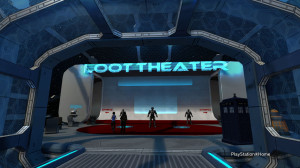
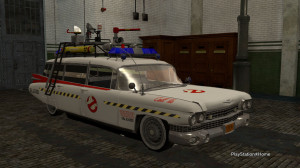
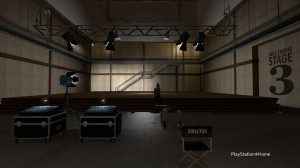
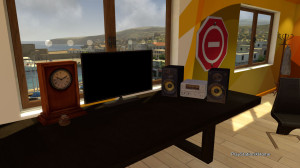

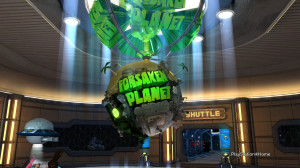
Loot are a part of Sony pictures entertainment which have the Men in Black and Ghostbuster licenses as well as Karate Kid, resident evil, underworld and spiderman to name a few. But as for the home experience they dont flood home with rubbish and are at the forefront of the home experience.